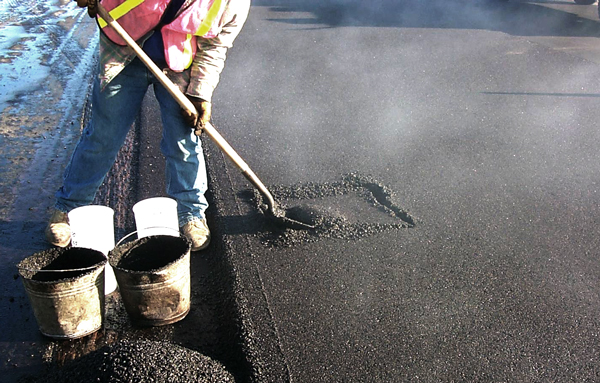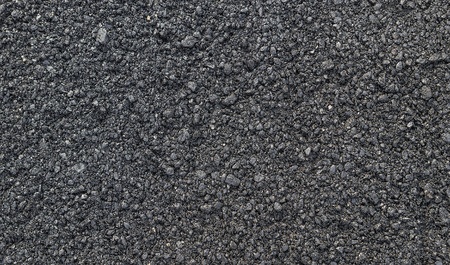Unlocking the Secrets of Warm Mix Asphalt Modern Technology
Exploring the depths of warm mix asphalt innovation reveals a globe where precise processes and accurate formulations merge to form our roads and facilities. The combination of aggregates, binders, and fillers isn't just a construction task but a strategic orchestration of resilience and efficiency. As we peer into the detailed dancing of parts, a tapestry of strength and sustainability unravels. Yet what exists underneath this surface of asphaltic mastery, and what keys wait to be introduced in the world of paving developments?
Significance of Warm Mix Asphalt
Warm Mix Asphalt plays a vital role in modern-day infrastructure growth due to its longevity and cost-effectiveness. As the most generally utilized leading material for roadways, freeways, and parking area, Warm Mix Asphalt provides a series of benefits that contribute to its relevance in building tasks. One key advantage is its capacity to endure hefty traffic tons and rough weather, giving a dependable and resilient surface for transport networks. Additionally, Hot Mix Asphalt is economical in both first construction and long-term maintenance, making it a favored selection for many infrastructure tasks.
The longevity of Warm Mix Asphalt stems from its composition, which includes accumulations, binder, and filler materials that are carefully picked and mixed to fulfill certain performance needs. Generally, the significance of Warm Mix Asphalt in facilities development can not be underrated, as it continues to be a keystone of contemporary building practices.
Parts of Asphalt Mixes
The composition of asphalt blends includes meticulously chosen accumulations, binder, and filler materials that are crucial for attaining particular efficiency requirements. Accumulations are the primary element of asphalt blends, offering toughness and stability. These accumulations can be natural, such as crushed rock or crushed rock, or artificial, like recycled materials from old pavements. The binder, typically asphalt or asphalt cement, holds the aggregates with each other and provides versatility and resilience to the mix. The choice of the binder is crucial as it directly affects the mix's efficiency in different climate condition. Fillers, such as moisturized lime or Rose city cement, are used to enhance the mix's workability and aging resistance. Angled Parking.
The combination and proportion of these parts play a substantial duty in establishing the top quality and efficiency of the asphalt mix. Engineers very carefully make the mix to meet particular demands, thinking about aspects like website traffic volume, environment conditions, and pavement life expectancy. Appropriate choice and harmonizing of aggregates, binder, and fillers are necessary for developing sturdy, lasting asphalt pavements.
Combining and Production Techniques

As soon as the aggregates are selected, the binder, usually asphalt cement, is included in bind the materials together. The binder's quality and quantity considerably influence the mix's versatility, resistance, and toughness to environmental factors. Additionally, fillers like moisturized lime or Rose city concrete may be integrated to boost particular attributes of the asphalt mix, such as its workability or dampness resistance.
Throughout manufacturing, the accumulations and binder are heated up, normally between 250-325 ° F(121-163 ° C ), to promote mixing and ensure proper covering of the aggregates. The blending procedure should be extensive to achieve a homogeneous combination that promotes the preferred performance features of the asphalt. Different techniques, such as set blending or drum blending, are employed to attain top quality and consistent asphalt blends for building projects.
Factors Impacting Asphalt Performance
Variables influencing asphalt efficiency incorporate a series of variables that affect the durability, long life, and general top quality of asphalt pavements. One crucial variable is the quality of products utilized in the asphalt mix. The type and source of aggregates, the binder top quality, and the ingredients all play a significant role in figuring out the performance of the asphalt sidewalk. The rank of accumulations is vital as it influences the mix's workability, stability, and resistance to rutting and fracturing.

Style factors to consider, such as sidewalk density and drainage, are important in making sure the lasting efficiency of the asphalt sidewalk. By meticulously thinking about these engineers, factors and professionals can maximize asphalt efficiency and improve the service life of pavements.
Sustainable Practices in Asphalt Modern Technology

WMA enables for the production and placement of asphalt blends at lower temperature levels compared to standard hot-mix asphalt, resulting in reduced energy intake and greenhouse gas emissions. The usage of permeable asphalt mixes can assist mitigate stormwater overflow concerns by allowing water to penetrate via the pavement and right into the ground, advertising natural water filtering and reenergize processes.
Final Thought
In final thought, hot mix asphalt modern technology plays a crucial role in contemporary facilities growth as a result of its resilience and cost-effectiveness. By thoroughly balancing elements, utilizing appropriate blending methods, and thinking about numerous variables, designers can develop top quality asphalt blends that endure rush hour loads and rough climate condition. Accepting lasting methods, such as making use of recycled products and warm-mix modern technologies, better boosts the ecological friendliness of asphalt innovation.
Blending and manufacturing strategies in warm mix asphalt innovation include the precise mix and handling of accumulations, binder, and fillers to create a durable and high-performance asphalt mix.Factors affecting asphalt efficiency include an array of variables that influence the longevity, longevity, and overall top quality of asphalt sidewalks. Lasting practices in asphalt technology include numerous efforts aimed at lowering the environmental impact of asphalt manufacturing and paving processes. By including Bonuses recovered asphalt pavement (RAP) and recycled asphalt roof shingles (RAS) into brand-new asphalt mixes, the sector can considerably reduce the consumption of raw products and energy, while additionally reducing landfill waste.
WMA enables for the manufacturing and placement of asphalt blends at lower temperature levels compared to standard hot-mix asphalt, that site resulting in decreased power consumption and greenhouse gas discharges.